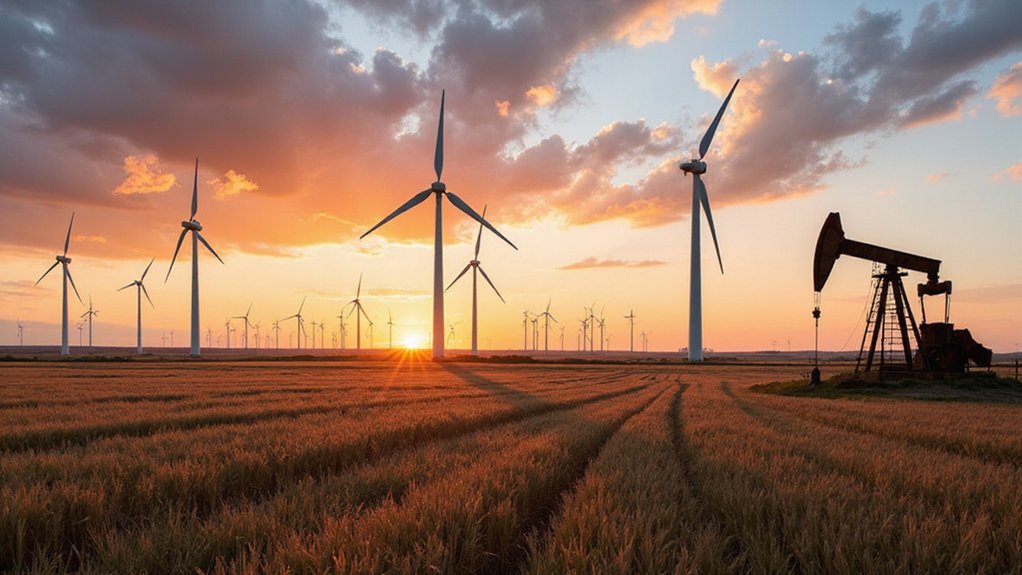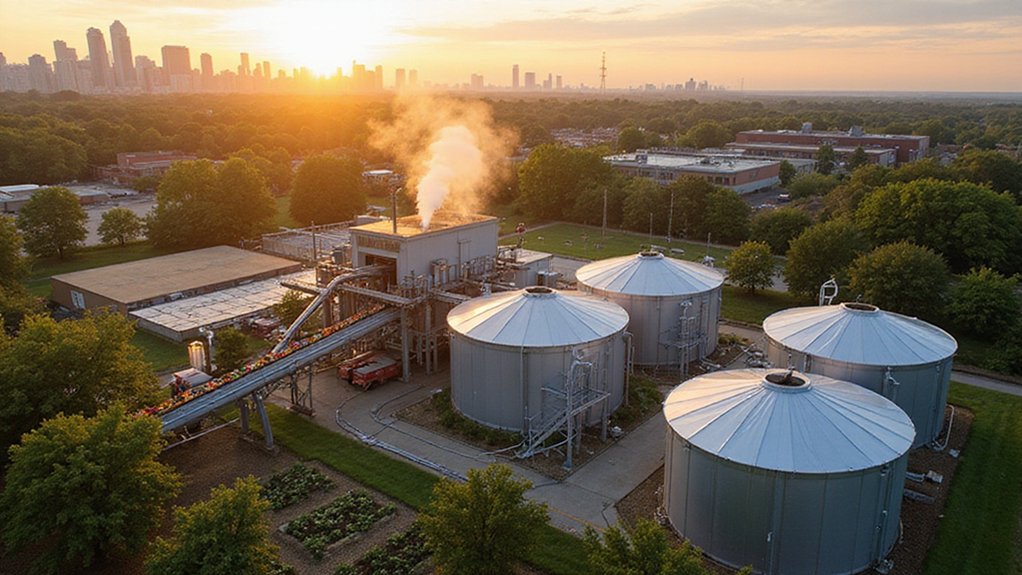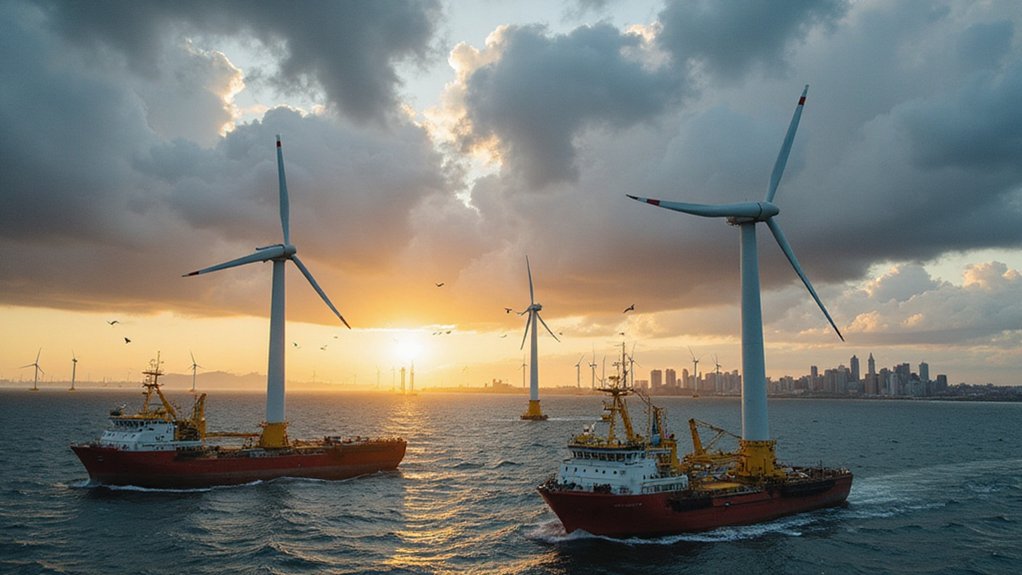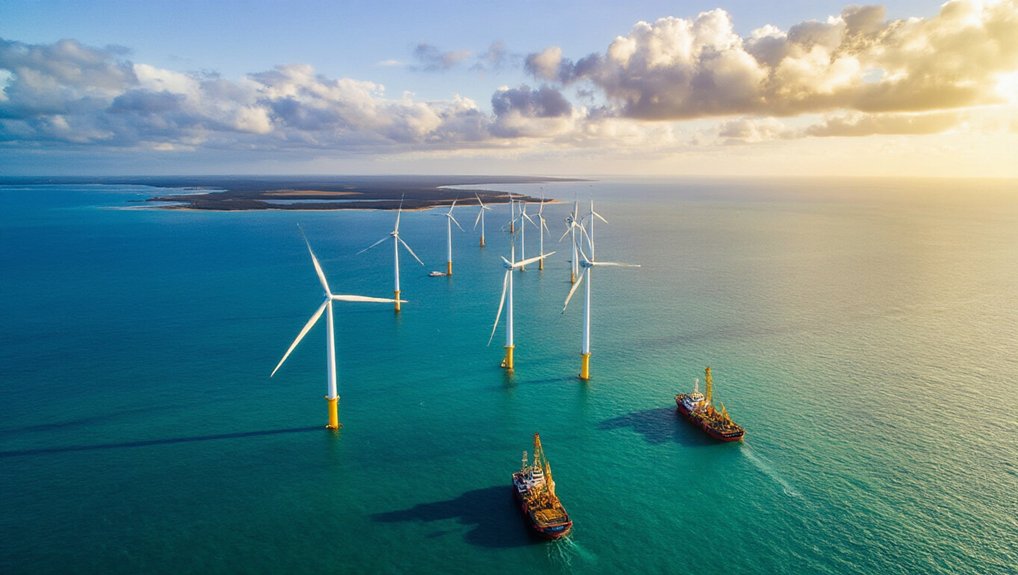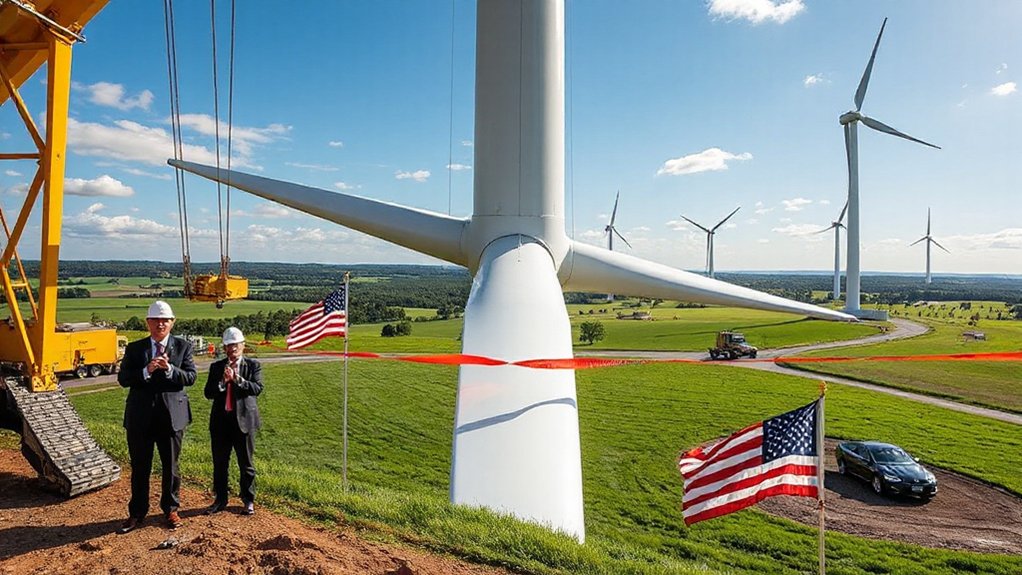Oklahoma has transformed from an oil-dependent state to a renewable energy leader. It now ranks third nationally in wind power production, with wind accounting for 94% of its renewable output. This shift has created jobs and diversified the economy. Nearly half of Oklahoma’s electricity now comes from clean energy sources. The state’s journey shows how traditional energy regions can successfully pivot to new technologies while maintaining economic strength. What caused this dramatic change?
Oklahoma has transformed into a clean energy leader over the past decade, with renewable resources now powering nearly half of the state’s electricity needs. The state’s journey from oil country to renewable powerhouse has been remarkable. In 2013, renewables made up just 19% of Oklahoma’s electricity. By 2023, that figure jumped to 45%.
Wind energy stands as the dominant renewable source in Oklahoma. The state ranks third nationwide in wind power production, trailing only Texas and Iowa. Wind accounts for about 94% of Oklahoma’s renewable generation. The massive Traverse Wind Energy Center, completed in 2022, produces enough electricity to power roughly 300,000 homes.
Oklahoma’s movement toward clean energy extends beyond wind. Solar power, hydropower, and biomass also contribute to the renewable mix. Combined, wind and solar now generate about 41% of the state’s electricity as of early 2025. This growth continues despite Oklahoma’s traditional identity as an oil-producing state.
The renewable boom has created job opportunities across Oklahoma. Employment in solar, wind, battery storage, and energy efficiency sectors is projected to grow through 2030. These jobs provide economic diversification in a state historically dependent on fossil fuels.
Oklahoma’s energy shift mirrors a national trend away from coal. The state has steadily replaced coal-fired generation with cleaner alternatives, improving the electricity sector’s emissions profile. This shift is reinforced by the historic low of coal generation nationally, which now accounts for only 15% of total electricity production. This change demonstrates the growing economic advantage of renewable energy. The state’s success aligns with the global renewable energy trend where renewables are expected to account for over 42% of global electricity by 2028.
Despite progress in clean energy production, Oklahoma faces environmental challenges. The state ranks 45th in a recent “greenest states” report, with issues in water and air quality persisting. This contrast highlights that renewable energy alone doesn’t solve all environmental problems. Oklahoma is tied for worst water quality in the United States with Louisiana and New Mexico.
Oklahoma’s renewable success required significant infrastructure investment. New transmission capacity and grid modernization were essential to handle growing wind and solar generation.
As the renewable sector expands, energy storage solutions will play an increasingly important role in managing these variable power sources.
References
- https://www.eia.gov/state/analysis.php?sid=OK
- https://journalrecord.com/2025/04/29/oklahoma-green-ranking-2025/
- https://www.kosu.org/energy-environment/2025-04-04/report-as-coal-declines-oklahoma-continues-to-replace-it-with-renewables
- https://www.nrel.gov/docs/fy22osti/82211.pdf
- https://oklahomawatch.org/2024/08/08/does-45-of-oklahomas-energy-come-from-renewable-resources/
